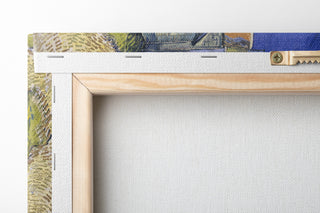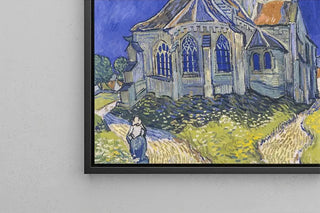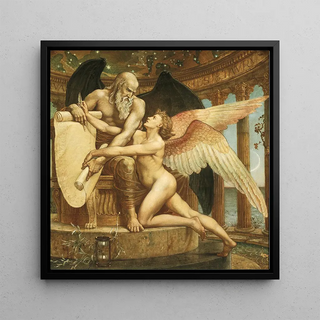Art print | The Roll of Destiny - Walter Crane


View from behind

Frame (optional)
The pictorial narration of "Le rouleau du destin" by Walter Crane
In the art print of "Le rouleau du destin," Walter Crane orchestrates a composition where sinuous lines and ornamental motifs respond to create an intense visual narration. The ochre and greenish hues, punctuated with deep reds, structure the space, while the finesse of the line and the refined use of motifs reveal a technique close to Art Nouveau illustration. The overall atmosphere is both dreamlike and solemn: stylized characters, draped figures, and symbols succeed each other like stations in a story. This visual reading invites contemplation and captures the eye through its balance between decorative and expressive elements.
Walter Crane, master of ornament and illustration
Walter Crane, an important figure in late 19th-century English illustration, greatly contributed to the renewal of decorative vocabulary through his interest in medieval ornament and applied arts. Influenced by the Arts and Crafts movement, he designed engravings, prints, and illustrated books where stylization, artisanal skill, and aesthetic engagement intertwine. His work has inspired designers and publishers, establishing milestones between decorative art and printed production. The art print of "Le rouleau du destin" fits within this trajectory and illustrates his taste for subtle visual storytelling and mastery of detail.
A decorative acquisition with multiple assets
The art print of "Le rouleau du destin" proves to be a relevant decorative choice for a living room, an office, or a library, bringing both character and elegance. Available in multiple formats, the canvas of "Le rouleau du destin" captures the richness of color and the precision of the line, while the art print of "Le rouleau du destin" offers a wall presence that structures the space. Faithful to the original, this art print enhances textures and contrasts, transforming a room into a place of attention and conversation. Adopting this piece is like inviting a work of artistic history into your home that dialogues with both contemporary and classic interiors.

Matte finish

View from behind

Frame (optional)
The pictorial narration of "Le rouleau du destin" by Walter Crane
In the art print of "Le rouleau du destin," Walter Crane orchestrates a composition where sinuous lines and ornamental motifs respond to create an intense visual narration. The ochre and greenish hues, punctuated with deep reds, structure the space, while the finesse of the line and the refined use of motifs reveal a technique close to Art Nouveau illustration. The overall atmosphere is both dreamlike and solemn: stylized characters, draped figures, and symbols succeed each other like stations in a story. This visual reading invites contemplation and captures the eye through its balance between decorative and expressive elements.
Walter Crane, master of ornament and illustration
Walter Crane, an important figure in late 19th-century English illustration, greatly contributed to the renewal of decorative vocabulary through his interest in medieval ornament and applied arts. Influenced by the Arts and Crafts movement, he designed engravings, prints, and illustrated books where stylization, artisanal skill, and aesthetic engagement intertwine. His work has inspired designers and publishers, establishing milestones between decorative art and printed production. The art print of "Le rouleau du destin" fits within this trajectory and illustrates his taste for subtle visual storytelling and mastery of detail.
A decorative acquisition with multiple assets
The art print of "Le rouleau du destin" proves to be a relevant decorative choice for a living room, an office, or a library, bringing both character and elegance. Available in multiple formats, the canvas of "Le rouleau du destin" captures the richness of color and the precision of the line, while the art print of "Le rouleau du destin" offers a wall presence that structures the space. Faithful to the original, this art print enhances textures and contrasts, transforming a room into a place of attention and conversation. Adopting this piece is like inviting a work of artistic history into your home that dialogues with both contemporary and classic interiors.






